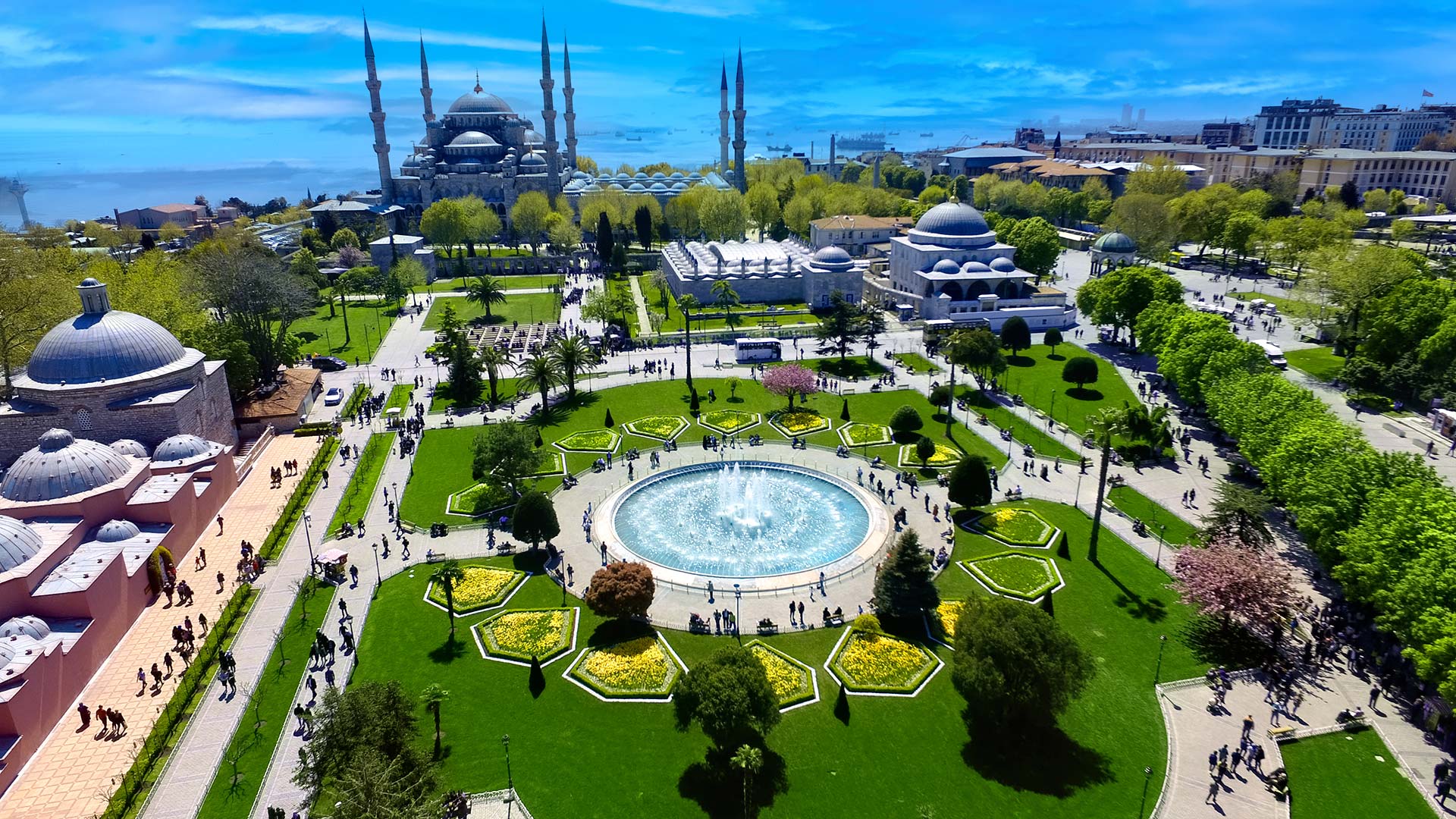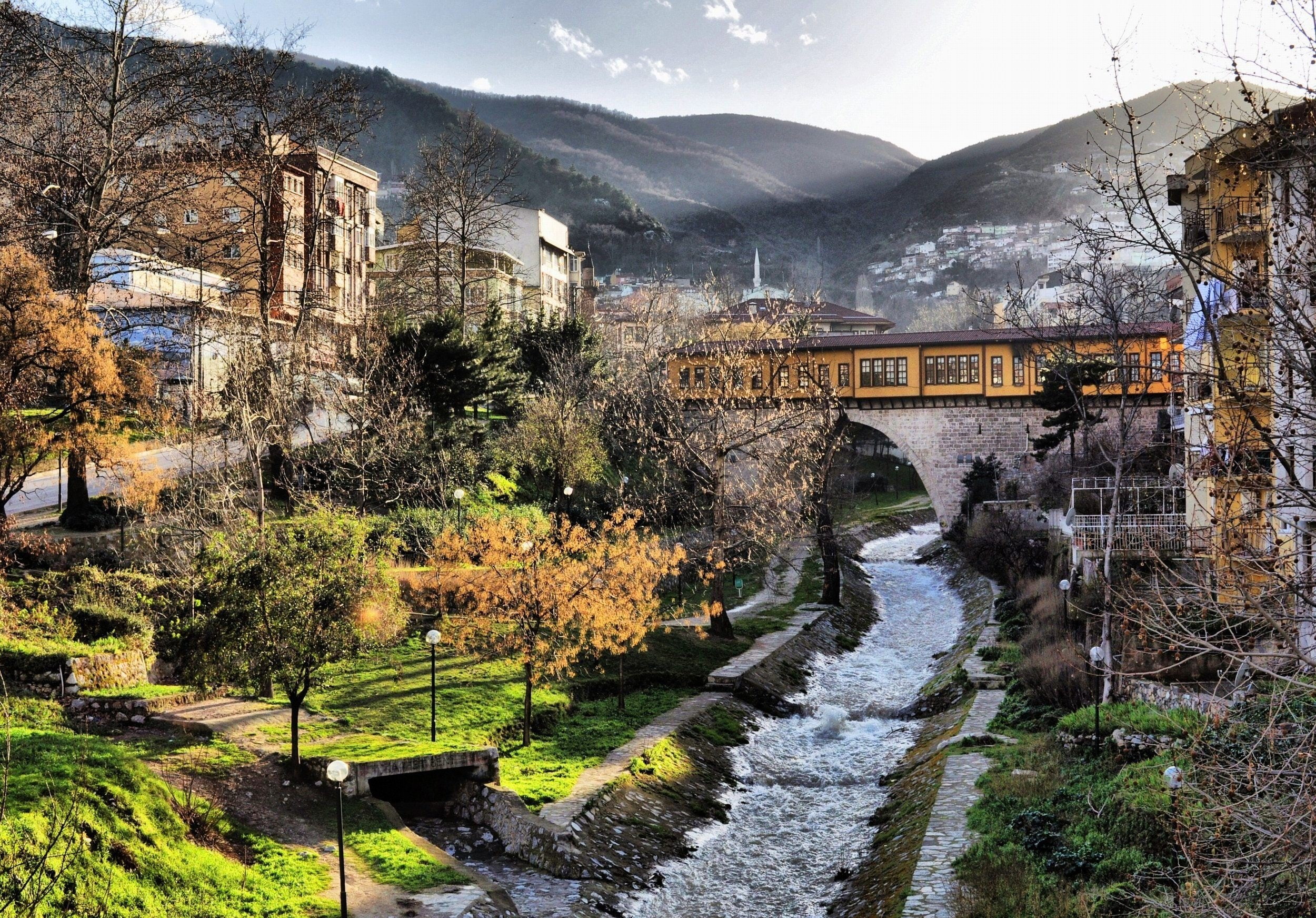The Hippodrome of Constantinople was a circus that was the sporting and social centre of Constantinople, capital of the Byzantine Empire. Today it is a square named Sultanahmet Meydanı (Sultan Ahmet Square) in the Turkish city of Istanbul, with a few fragments of the original structure surviving.
Although the Hippodrome is usually associated with Constantinople’s days of glory as an imperial capital, it actually predates that era. The first Hippodrome was built when the city was called Byzantium, and was a provincial town of moderate importance. In AD 203 the Emperor Septimius Severus rebuilt the city and expanded its walls, endowing it with a hippodrome, an arena for chariot races and other entertainment.
In AD 324, the Emperor Constantine the Great decided to move the seat of the government from Rome to Byzantium, which he renamed Nova Roma (New Rome). This name failed to impress and the city soon became known as Constantinople, the City of Constantine. Constantine greatly enlarged the city, and one of his major undertakings was the renovation of the Hippodrome. It is estimated that the Hippodrome of Constantine was about 450 m (1,476 ft) long and 130 m (427 ft) wide. Its stands were capable of holding 100,000 spectators.
Another emperor to adorn the Hippodrome was Theodosius the Great, who in 39 brought an obelisk from Egypt and erected it inside the racing track. Carved from pink granite, it was originally erected at the Temple of Karnak in Luxor during the reign of Thutmose III in about 1490 BC. Theodosius had the obelisk cut into three pieces and brought to Constantinople. The top section survives, and it stands today where Theodosius placed it, on a marble pedestal. The obelisk has survived nearly 3,500 years in astonishingly good condition.
n the 10th century the Emperor Constantine Porphyrogenitus built another obelisk at the other end of the Hippodrome. It was originally covered with gilded bronze plaques, but they were sacked by Latin troops in the Fourth Crusade. The stone core of this monument also survives, known as the Walled Obelisk.
Seven statues were erected on the Spina of the Hippodrome in honour of Porphyrios, a legendary charioteer of the early 6th century who in his time raced for the two parties which were called “Greens” and “Blues”. None of these statues have survived. The bases of two of them have survived and are displayed in the Istanbul Archaeological Museum.
Contemporary description
The area is officially called Sultan Ahmet Square. It is maintained by the Turkish government. The course of the old racetrack has been indicated with paving, although the actual track is some 2 m (6.6 ft) below the present surface. The surviving monuments of the Spina (the middle barrier of the racecourse), the two obelisks and the Serpentine Column, now sit in holes in a landscaped garden.
The German Fountain (“The Kaiser Wilhelm Fountain”), an octagonal domed fountain in neo-Byzantine style, which was constructed by the German government in 1900 to mark the German Emperor Wilhelm II’s visit to Istanbul in 1898, is located at the northern entrance to the Hippodrome area, right in front of the Blue Mosque.
Sir Charles Newton, the English archaeologist who excavated Halikarnassos and Knidos, in 1855 excavated the one surviving jaw of a snake from the Serpent Column. The Hippodrome was excavated by the Director of the Istanbul Archeological Museums, archeologist Rüstem Duyuran in 1950 and 1951.A portion of the substructures of the Sphendone (the curved end) became more visible in the 1980s with the clearing of houses in the area. In 1993 an area in front of the nearby Sultanahmet Mosque (the Blue Mosque) was bulldozed in order to install a public building, uncovering several rows of seats and some columns from the Hippodrome.
Investigation did not continue further, but the seats and columns were removed and can now be seen in Istanbul’s museums. It is possible that much more of the Hippodrome’s remains still lie beneath the parkland of Sultanahmet.
The Hippodrome was depicted on the reverse of the Turkish 500 lira banknotes of 1953–1976.




